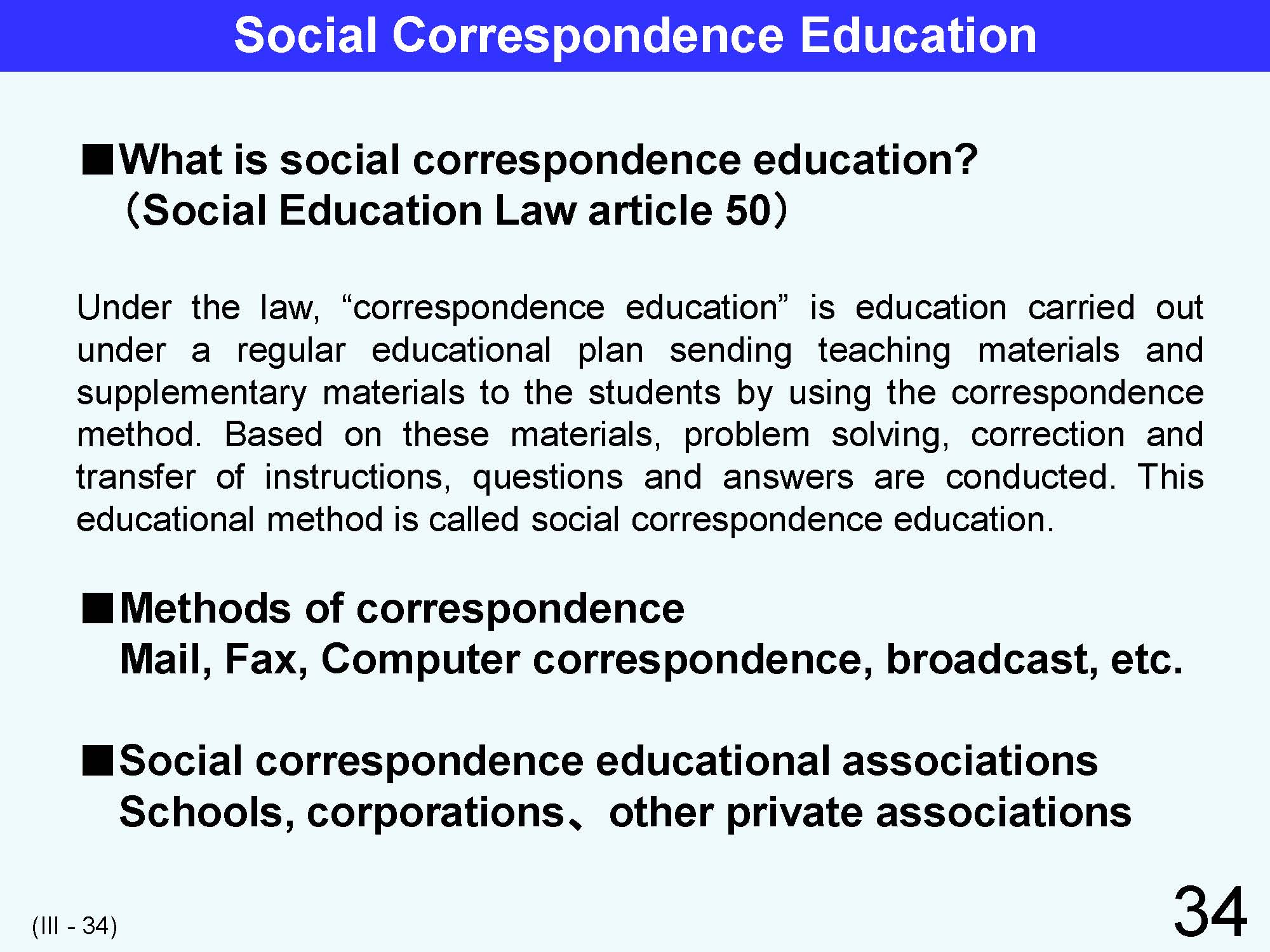| 34 | gIII Japanese Social Educationh | Previous | Next | JAPANESE |
|---|---|---|---|---|
 |
||||
| Under the Social Education Law, correspondence education is approved when conducted using regular educational plans, involving sending of teaching materials and supplementary materials to students through the correspondence method. Based on these materials, students solve problems, teachers make corrections and give instructions, and questions and answers are corresponded. (Article 50)
The major correspondence methods and mediums comprise mail, fax, computers, broadcasts, and other types. By using these methods, videos and sound materials can be used efficiently. For evaluation purposes, social correspondence education should be associated with schools and vocational training institutions. There are four types of correspondence courses : 1) qualifications, 2) business, 3) hobbyElanguage and 4) liberal arts. |
||||
Please send your comments and concerns here
kamada@criced.tsukuba.ac.jp
Center for Research on International Cooperation in Educational Development(CRICED) University of Tsukuba
1-1-1, Tennodai, Tsukuba-shi, IBARAKI
305-857, JAPAN